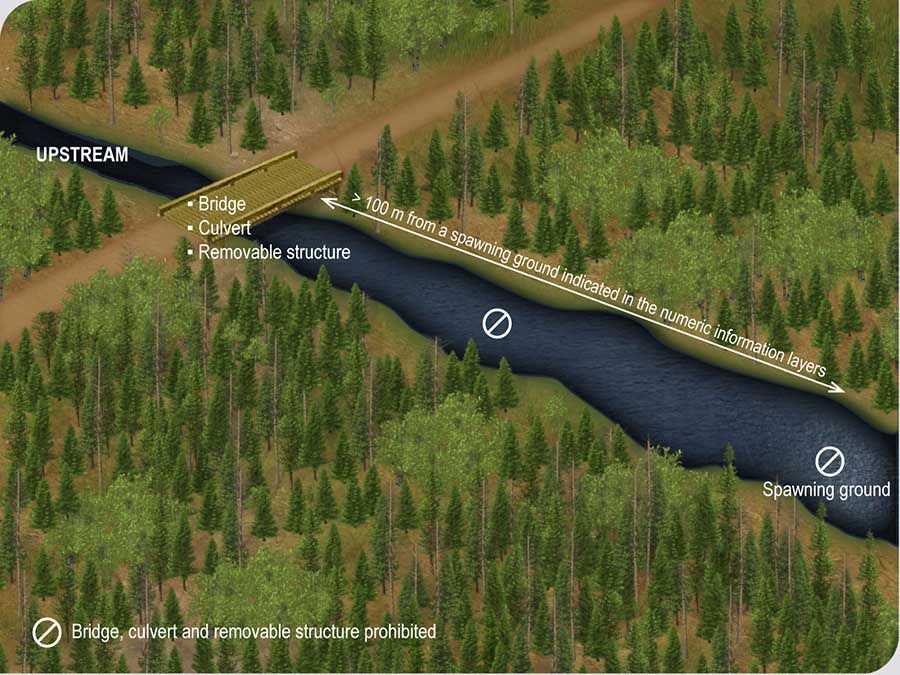Chapter V – Roads, sandpits and forest infrastructures
Division III – Bridge, culverts, removable structures and rudimentary structures
§2. Prohibited construction, improvement or repair
Section 89
The construction of a bridge or a culvert or the installation of a removable structure is prohibited in a spawning ground. Such work is also prohibited within the first 100 meters upstream from a spawning ground indicated in the numeric information layers used for forest planning. 
1
Objective
- To preserve the quality of spawning grounds
Explanations
The construction of a bridge or culvert or the installation of a removable structure is prohibited in a spawning ground. Such work is also prohibited within the first 100 metres upstream from a spawning ground indicated in the numeric information layers used for forest planning. The purpose of this is to avoid the destruction or deterioration of spawning grounds as a result of work carried out in the watercourse bed.
However, the construction of a bridge without piers or a culvert with an arch, or the installation of a removable structure whose supports are located outside the upper limit of the bank, is permitted provided all the work takes place outside the watercourse bed, and provided no forest machinery circulates in the watercourse. Consequently, all the components of the bridge, culvert or structure pass over the watercourse without altering the bed or banks and without touching the spawning ground to be protected.
In addition, the replacement of a bridge by another bridge with piers or by a culvert with a conduit is strictly prohibited since such an operation would involve work in the watercourse bed.
Additional information
Spawning grounds are essential, since fish use them for reproduction and lay their eggs there to ensure the survival of the species.
When planning to construct a bridge or culvert or install a removable structure, it is important to contact the MFFP’s regional representatives for information on the locations of the spawning grounds shown on numeric information layers.
Since it is impossible to know where all the spawning grounds are located, forest stakeholders must carefully examine the sites at which they plan to erect the structures in order to identify any indicators associated with these habitats, which vary according to the species of fish concerned.
The brook trout, commonly known as the speckled trout, is much sought-after by fishing enthusiasts. It is found in most bodies of water in Québec. It lives in streams, rivers and lakes where the water is cool, clear and well-oxygenated.
To help identify sites conducive to spawning before starting work, we recommend that you consult the guide to the identification of brook trout spawning grounds in watercourses  (in French only).
(in French only).
Figure 89 Distance between a spawning ground and a bridge, culvert or removable structure

